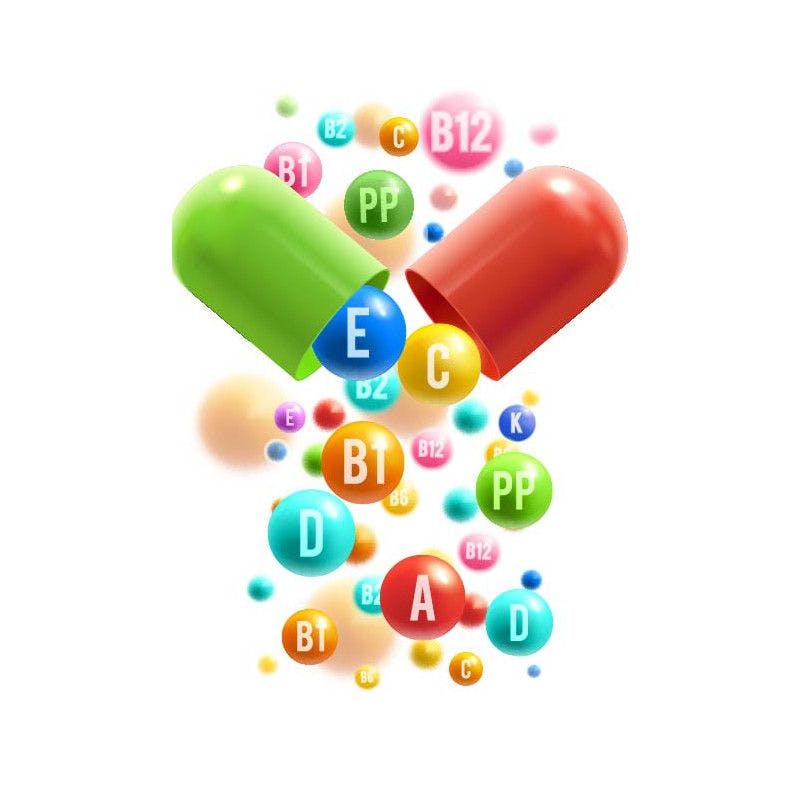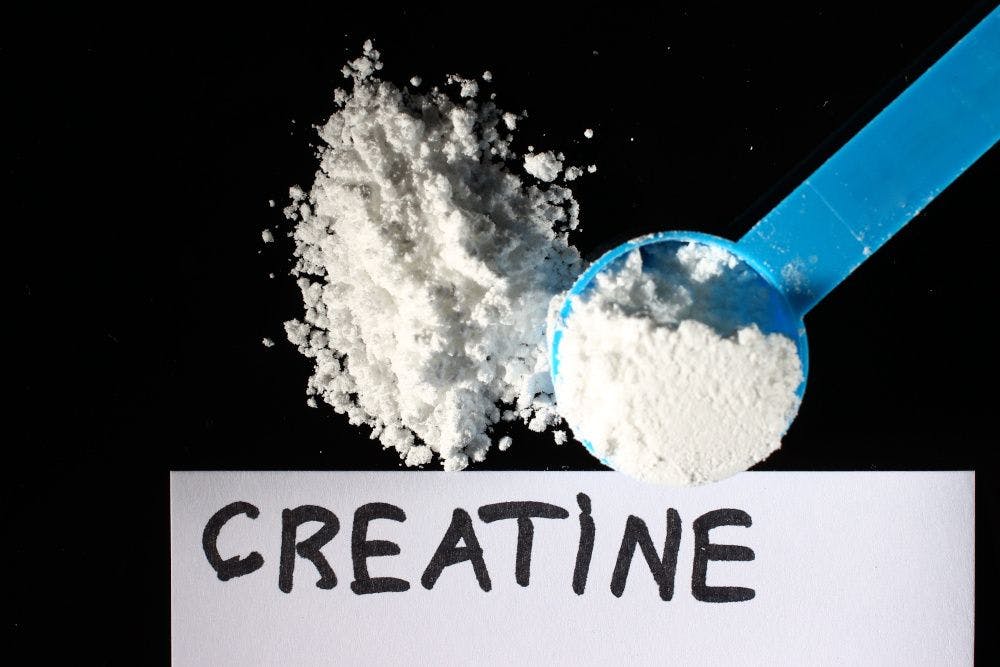2023 Mineral trends: Gummies, chelation, stability, and more
Mineral supplements are better than ever.
Photo © Vector Tradition / Stock.adobe.com

Like an old shoe, minerals just comfortably fit the dietary supplements category. They’re essential to hundreds of bodily functions, assisting enzymes in chemical reactions. They’re the backbone of, well, bones. They keep your fluids fluid. They help make your muscles move and keep your nerves steady. And that’s just for starters.
But don’t call them basic. Because ingredient companies are zhuzhing up the category, making minerals both more interesting and additionally attractive to brands and consumers alike. How are they doing so? By exploring new delivery methods and by piggybacking on the popularity of what some might say are sexier supplement categories.
Gummy Popularity Is Sticking for Minerals
“Minerals had a history of being a box that was checked in a formulation, and much thought wasn’t given to the form of the mineral,” says Michelle Martin, president and COO at mineral ingredients supplier Cypress Systems Inc. (Madera, CA). “Today’s supplement consumer is more educated and realizes form matters.”
Oliver Riemann, senior marketing and business development manager at Albion Minerals, part of Balchem Corp. (Montvale, NJ), agrees. “Nowadays, consumers are seeking convenient and enjoyable ways to incorporate essential minerals into their daily routines,” he says.
And what the consumer wants, the consumer gets.
Riemann notes that “in response to this shifting demand, in recent years we have seen a boom in new, more convenient delivery formats emerging on the market.” He explains that Albion’s research and development team “has worked diligently to integrate our minerals into a variety of new formats such as gummies, effervescent tablets, and powdered supplements, by doing [our] own trials in our lab in Utah to have the best possible preconditions to support and consult our customers whenever challenges in their formulation occur.”
The gummy format is far from new, but it is still growing in popularity, with many companies formulating minerals for use in the gummy market. Gadot Biochemical Industries’ (Haifa Bay, Israel) CEO Ohad Cohen advises that “consumers are demanding more gummies with minerals, and we have the experience in minerals to provide gummy manufacturers with their quest to include calcium, magnesium, and zinc in their formulations.”
Recognizing that gummies “have become one of the fastest-growing categories in the nutraceutical market,” Gadot developed a magnesium citrate that Cohen says is a “bioavailable source with high concentration, perfect for incorporating into gummies.” He adds that this advancement addresses food technologists’ challenges in creating effective and palatable mineral gummies.
But Gadot is not just about gummies. When it comes to minerals, the company is known for its “tailor-made solutions for different applications” beyond gummies and softgels, and also for fortified and functional foods and beverages.
Formats Beyond Gummies
Martin, too, is on board with innovative product-delivery methods, stating that “brands are becoming very creative in how they’re incorporating minerals into their products.” For instance, she advises that Cypress’s minerals “have been used in a wide range of applications, including immunity shots, functional sparkling waters, protein powders, gummies, crackers, and even lactation cookies.”
And Martin is not just touting the number of applications and flavor profiles, but points to “the rate at which a body can utilize what it consumes” as being Cypress’s “top priority.” That’s what impacts consumers’ health and the effectiveness of the finished product, she says.
Cypress also has a line of yeast-bound minerals featuring its flagship branded ingredient SelenoExcell, says Martin. “Through a specialized fermentation process,” she advises that “minerals are absorbed into the cell wall of the yeast, transforming it into a food-form ingredient that makes it more bioavailable to the body.”
Martin further shares that “yeast, in general, is growing in popularity as the plant-based nutrition trend attracts increased attention.” She maintains that “as functional foods grow in popularity, food-form minerals are an easy and effective solution.”
While almost everyone is hopping aboard the chew-chew train, at least two companies remind us that not everyone is ready to throw out other tried-and-true forms.
“Though gummies have gained significantly in popularity,” according to Yu Liu, PhD, research and development manager at Innophos (Cranbury, NJ), “softgels and capsules are different supplement forms that continue to be popular for end-consumers.” He believes that these forms are also “still a nice alternative to those with so-called ‘pill fatigue.’”
So, are minerals consumers really done with pills yet? Maybe, but maybe not. As Riemann reminds his colleagues, “While functional gummies are currently one of the fastest-growing categories, we shouldn’t forget that tablets and capsules are still dominating the market. So, it’s important to ensure we continue to maintain and improve the efficacy of these formats.”
The Case for Chelation
Heeding the latest desires for friendlier delivery forms is just one challenge for this market. Another is bioavailability. And some would say that there’s not a more sizzling trend in today’s minerals market than minerals that are chelated—a process many agree that, compared to non-chelated minerals, makes mineral absorption easier for the body.
In fact, says Liu, in addition to embracing new delivery systems like gummies to appeal to a broader population, “improving the dynamics of nutrient absorption to boost nutrition through mineral chelation” is another key way of advancing the minerals category.
He’s got reason behind his rationale. Innophos recently compared three different USP sources of magnesium citrate compounds and their effects on the texture and stability of pectin-based gummies. The company summarized its study results in a new white paper in support of its branded Chelamax magnesium citrate ingredient for gummies.1 Liu, who is a co-author of the white paper, proclaims that “bioavailability is a major concern as our customers are not just seeking out higher loading but also improved bioavailability, which we are able to provide with many of our chelated compounds.”
Meanwhile, Albion’s Riemann declares, “In the minerals space, common challenges related to bioavailability and side effects are being tackled with new research and science aimed at optimizing ingredients’ efficacy and supporting new product claims.”
He says that “multiple studies have shown that chelation can improve the bioavailability of minerals, which means they can be more easily absorbed into the human body and promote optimal tolerability—giving consumers a digestive-friendly experience in their daily consumption.” Riemann informs that the Albion portfolio predominantly comprises organic mineral amino acid chelates, like its well-researched branded iron ingredient Ferrochel, a bisglycinate chelate that, compared to the inorganic alternative, causes less gastric upset and doesn’t react with other nutrients.
“Consumers now have a better understanding about bioavailability,” says Gadot’s Cohen, adding that “organic mineral forms such as citrates, bisglycinates, and gluconates offer higher bioavailability compared to inorganic salts such as oxides, carbonates, sulfates, and phosphates.”
Cypress’s Martin agrees that “there is an increased buzz around chelated minerals, and it’s more than a trend. Scientifically, chelated minerals have been proven to have increased absorption, stability, and solubility while minimizing the negative side effects some minerals offer.”
Martin adds that “our brand was built on and remains dedicated to advancing the issue of bioavailability.” She shares that two years ago, “we saw a continued need for improved bioavailable minerals that yeast cannot absorb, so we launched a line of fully reacted chelated minerals.”
Here’s why. “Chelated minerals take inorganic forms of minerals and alter their physical and chemical properties by attaching them to an amino acid such as glycine, converting them into organic minerals. This chemical bond allows for better absorption,” Martin explains.
Overcoming Other Challenges in the Minerals Market
There are other challenges, too, for the minerals market, and they come with solutions that ingredients companies are happy to provide.
For example, Riemann advises that flavor and stability are still key challenges in the minerals category, especially when it comes to developing new delivery formats or combining minerals with other ingredients.
Speaking specifically to flavor, Riemann explains that “unpleasant tastes in mineral supplements can deter consumers from consistent usage and put them off repeat purchases. To overcome this challenge, we harnessed the latest cutting-edge technology to create ‘taste-free’ versions of the main ingredients in our Albion Minerals range.”
Albion’s Iron Taste-Free and Magnesium Bisglycinate Chelate Taste-Free are just two of the ingredients in the line that Riemann calls “virtually flavorless, making it easier for brands to formulate delicious and consumer-friendly products.”
Given the scope of Innophos’s white paper, Liu speaks specifically to the gummy segment when he says that “the texture is a major concern from large-scale multinational customers.” He notes that “they specifically call out grittiness, for example, as a significant textural concern for their products and are always on the lookout for new, improved mineral raw materials to solve this issue.”
Among the findings in the Innophos study on which the white paper was based was the result that showed that pectin gummies made with Chelamax magnesium citrate exhibited a more pleasing texture, less stickiness, and higher loading levels of magnesium compared to the other ingredients.1
Liu also points to “the stability of the mineral in the gummy,” observing that mineral stability for product formulators “is top of mind as the mineral compound can degrade over time and the level of mineral decreases. Manufacturers compensate for this by adding significant overage of minerals to the supplement, which leads to increased costs.” Sidestepping this need is a major advantage.
Sports Nutrition, Health Conditions, Growth Opportunities for Minerals
It’s no secret that the sports/active nutrition category is on a roll. According to Grand View Research, the global sports nutrition market was valued at $42.9 billion in 2022 and is estimated to expand at a compound annual growth rate of 7.4% from 2023 to 2030.2 Cohen views the sports category’s strong growth as an opportunity for the minerals market, one that is driven by “mainstream consumers purchasing sports/active nutrition products and who are seeking convenient, on-the-go functional products.”
He’s thinking of the importance of minerals in sports and energy drinks. “Consumers are looking for beverages that contain sodium, potassium, calcium, and magnesium,” says Cohen. “Consumers want the right amount of electrolytes with less sugar. We see strong development in ready-to-drink (RTDs) and powder in sachets ready to mix with water.”
When it comes to functionality, it’s not just the product delivery method that matters. Apparently, consumers want their minerals with a side of multipurpose, please. This applies to all health concerns, sports nutrition and beyond.
In this regard, Martin finds that there “is a surge in mineral use within condition-specific formulas as the increase of knowledge in their specialized functions expands. With the notion that most consumers are no longer looking for just multis or low-quality ingredients, it makes sense that they are turning to these more personalized formulas to improve their health experience.”
AIDP’s (City of Industry, CA) flagship magnesium brand, Magtein, is known for its brain-support benefits, says Laurentia Guesman, AIDP’s business manager, food and supplement ingredients. Magtein contains magnesium L-threonate, phosphatidylserine, and vitamins C and D.
A newly published, double-blind, placebo-controlled study tested 109 healthy Chinese adults ages 18-65, with subjects receiving either 2 g/day of Magtein or placebo.3 A standard test commonly used in Chinese hospitals and academic institutions for cognitive evaluation was administered before and after the 30-day study period, with results showing significant improvements over the control group in all five subcategories of test results as well as in overall memory quotient scores.
Guesman further advises that AIDP’s newer magnesium product, ATAMg, is positioned for relief from symptoms of premenstrual syndrome (PMS). Both Magtein and ATAMg offer high bioavailability and ease in formulation, she notes. She adds that “zinc was strong during COVID, but we are seeing a shift to magnesium for mental health, sleep, and muscle relief.”
Albion’s Riemann shares that “we are also seeing a rising demand for multi-ingredient solutions that contain several on-trend ingredients in combination for improved efficacy, or to tackle multiple health issues at once.”
Meanwhile, Cohen cites troubling statistics about mental health from Mental Health America showing that 21 million Americans have depression and that anxiety affects nearly 42.5 million people in the U.S. But he also sees some promising news. He discloses that an Innova Lifestyle and Attitudes Survey 2023 showed that nearly 25% of Americans have made changes in their nutrition habits to improve their mental and/or emotional well-being during the past year, while one in two American consumers have turned to natural products to help provide mood support and promote calmness.
Calling magnesium “the mental health mineral,” Cohen opines that “it has never been timelier for formulators who want to address mood support.”
Back To Basics for Forward-Looking Growth
“Today’s consumers seek not only effective and bioavailable mineral supplements but also demand products backed by science, transparency, and sustainability—aspects that brands simply cannot overlook,” Riemann reminds us. “Brands that partner with ingredient suppliers able to provide solutions that meet all, or most, of these criteria can achieve a significant competitive advantage.”
And minerals are well established in the book of good health. According to Martin, “The foundational role of minerals in our health and wellness is becoming better understood by consumers. They are non-negotiables. We need them to live and function optimally.”
In addition to the essentialness of minerals, here’s another heartening thought for a category that is solid. Truth be told, there is some comfort for consumers in what’s comfortable.
Gadot’s Cohen tells the story this way: new ingredients are introduced in the dietary supplement and functional food industry at “an increasingly accelerated clip. Several are so new that consumers are largely unfamiliar with them.” On the other hand, Cohen expresses that this “contrasts to minerals, which nearly every health-conscious individual is aware of.”
That’s surely an encouraging thought even as mineral companies seek innovation and creativity in a category of mostly stable ingredients. No matter what the kids say these days, basic doesn’t always mean boring. Sometimes, it’s what consumers need and what companies can feel good about—as long as they address challenges, stay relevant, and meet consumer preferences.
References
- Innophos white paper: Chelamax magnesium: for a better gummy. March 30, 2023. https://www.innophos.com/gated-content/chelamax-magnesium-gummy-whitepaper
- Grand View Research. Sports nutrition market size, share & trends analysis report by product type (sports supplements, sports drinks), by application, by formulation, by consumer group, by end-user, by sales channel, by region, and segment forecasts, 2023 – 2030. https://www.grandviewresearch.com/industry-analysis/sports-nutrition-market#:~:text=Report%20Overview,7.4%25%20from%202023%20to%202030
- Zhang, C.; Hu, Q.; Li, S.; et al. A Magtein®, magnesium L-threonate, -based formula improves brain cognitive functions in healthy Chinese adults. Nutrients. 2022, 14 (24), 5235. DOI: 10.3390/nu14245235

Prinova acquires Aplinova to further increase its footprint in Latin America
April 7th 2025Prinova has recently announced the acquisition of Brazilian ingredients distributor Aplinova, which is a provider of specialty ingredients for a range of market segments that include food, beverage, supplements, and personal care.



















